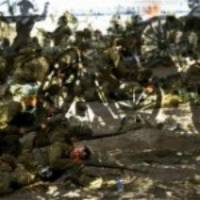Summary
Unlock the power of language with our comprehensive collection of grammar lessons designed specifically for 8th–12th graders. "Knowledge of Language" explores core language concepts that not only support effective writing and communication but also align with grammar skills assessed on the ACT. From sentence structure and active voice to advanced topics like parallelism consistency and nuanced use of modifiers, each lesson is crafted to build a solid foundation in grammar. Engaging activities, clear explanations, and practical examples ensure that students not only understand the rules but also learn to apply them with confidence in their writing. Whether you're prepping for exams or aiming to enhance your everyday writing skills, this collection is your guide to mastering the art of language.Resources

This grammar lesson will engage students in recognizing, identifying, and creating active or passive voice in their writing. The use of active and passive voice is demonstrated through the short story, "The Monkey's Paw," although any piece of literature could be substituted. This lesson includes optional... Read more »
Active or Passive? "The Monkey's Paw"
Grammar/Language Usage
- English/Language Arts
- British Literature, Composition
- 7th - 8th
- 8.1.W.2, 8.2.R.1, 8.5.R.2

Of all of the amazing skills that students possess, perhaps there is none greater than the ability to argue! Throw a grammar lesson in front of them, and most tune out immediately—the subject matter simply does not get them excited–-but tell your students that the goal for the day is to get into an... Read more »
The War of the Words
Grammar and Parts of Speech
- 9th - 12th
- English/Language Arts
- 9.3.W.3, 9.3.W.4, 9.5.W.3, WME301

In this lesson about the journalism writing process and the role of a copy editor, students will explore the importance of grammar and style. Students will work in groups to identify the key elements of a news story through a Card Sort. Then, students will work independently to practice editing a paragraph... Read more »
A Way With Words
Copy Editing and the Writing Process
- Individual Career Academic Plan (ICAP)
- English/Language Arts
- Composition, Creative Writing
- 7th - 8th
- 7.2.W.1, 7.2.W.2, 7.2.W.4, 7.2.W.5, 7.5.W.1, 8.2.W.1, 8.2.W.2, 8.2.W.4, 8.2.W.5, 8.5.W.1, SST 501, L&C 202

The purpose of this lesson is to introduce students to new concepts and terminology regarding syntax, focusing mostly on defining new terms and identifying them in both isolation and application. Read more »
Say It With Style
Syntax and Parallel Structure
- English/Language Arts
- 9th - 10th
- 9.5.R.1, 9.5.W.1, 9.5.W.2

Sentence Structure in Siddhartha
Simple, Compound, Complex, and Compound-Complex Sentences
- 9th Grade
Sentence structure adds variety, interest, and impact to a text. Different sentence structures are composed of clauses and combinations of clauses, and these add varied sentence lengths and styles to a text. This lesson asks students to identify and practice writing simple, compound, complex, and compound-complex... Read more »
Sentence Structure in Siddhartha
Simple, Compound, Complex, and Compound-Complex Sentences
- English/Language Arts
- A.P. Literature and Composition
- 9th Grade
- 9.5.W.2, SST 301
Standards
- introduce precise, informed claims
- include a defensible thesis
- acknowledge counterclaims or alternate perspectives
- organize claims, counterclaims, and evidence in a logical sequence
- provide the most relevant evidence to develop balanced arguments, using credible sources
- use sentence variety and word choice to create clarity and concision
- use style and tone that suits the audience and purpose
This work is licensed under a Creative Commons CC BY-SA 4.0 License.
Report copyright infringement »

